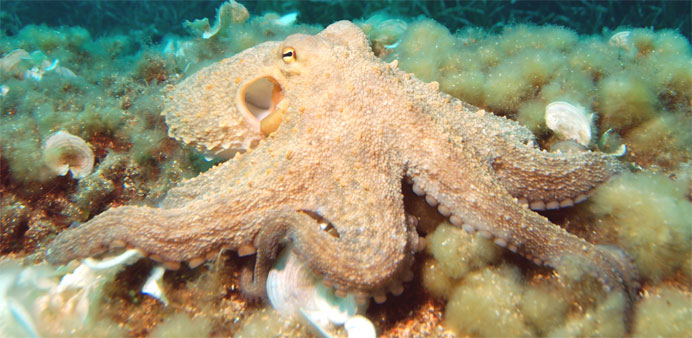AFP/Washington
The octopus's ability to camouflage itself has inspired a new kind of thin, flexible fabric that can automatically match patterns, US researchers said on Tuesday.
Engineers and biologists joined together for the nearly three-year-long US Navy-funded research collaboration, and its initial result is far from ready for commercial use.
But architects, interior designers, fashion houses and the military all have their eyes on its eventual capability to provide a first-of-its-kind man-made camouflaging material.
"If you illuminate it with white light and different patterns, it will automatically respond to that and produce a pattern that matches that," said lead author John Rogers, a professor in the department of materials science and engineering at the University of Illinois.
"Having said that, we are a long way from color-morphing wallpaper, but it is a step that could lead in that direction over time," he told AFP.
The material is described in this week's edition of the Proceedings of the National Academy of Sciences.
Its layers include temperature-sensitive dye and photosensors that respond in one to two seconds to changing patterns.
The dye appears black at low temperatures and clear at temperatures above 47 degrees Celsius (117 degrees Fahrenheit).
"These devices are capable of producing black-and-white patterns that spontaneously match those of the surroundings, without user input or external measurement," said the study.
The international research team included chemistry and mechanics experts at leading Chinese institutions as well as Roger Brown, a senior scientist at Brown University who is a top world expert on the physiology of cephalopod skin.
Cephalopods include octopuses, squid and cuttlefish. They can hide themselves by matching the color and textural appearance of their local environment.
These skills helps them escape predators and attack prey.

